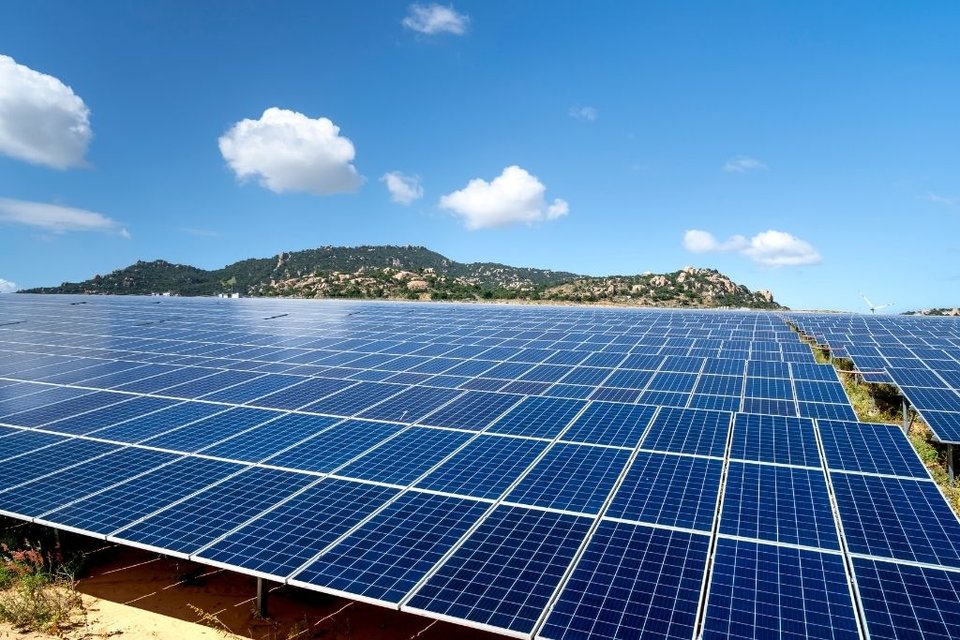Member/Partner News
Solar PV in Brazil surpass 14 GWand exceeds the Itaipu hydropower plant, celebrates ABSOLAR

Since 2012, solar PV sector brought more than BRL 74.6 billion in investments and generated more than 420,000 new jobs.
Brazil has just surpassed the historic mark of 14 gigawatts (GW) of operational installed capacity from solar photovoltaic (PV), considering both large-scale power plants and the systems installed on rooftops, facades or small plots. According to the Brazilian Photovoltaic Solar Energy Association (ABSOLAR), as a result, the solar source exceeded the installed capacity of the Itaipu hydropower plant, second largest power plant in the world and the main power plant of the Latin American.
According to ABSOLAR, solar PV has already brought to Brazil more than BRL 74.6 billion in new investments, BRL 20.9 billion of collections in public coffers and has generated more than 420,000 jobs since 2012. In addition, avoided the emission of 18.0 million tons of CO2 in the electricity generation.
To ABSOLAR’s CEO, Rodrigo Sauaia, solar PV advance through both large-scale power plants and systems for own electricity generation in homes, small businesses, rural properties and public buildings, serving as a prop for the social, economic and environmental Brazilian development. “Solar is the most competitive renewable source in the country and a real lever for economic, social and environmental development, generating employment and income, attracting investments, diversifying the electricity matrix, and providing systemic benefits for all Brazilian consumers.” he said.
“Large-scale solar PV is the sixth largest power source in Brazil and their generation is up to ten times cheaper than fossil fuel electricity generation or than imported electricity from neighboring countries”, adds Sauaia.
According to the association’s survey, the sector expects an accelerated growth of solar systems in Brazil this year, especially self-generation systems, due to the increase in electricity tariffs and the creation of the legal framework for distributed generation (Law nº 14,300/2022). “We project a very robust growth in solar energy this year, driven by the high cost of the electricity bill and the benefits provided to consumers as a definitive solution to guarantee electricity supply at competitive prices. Photovoltaic technology has become increasingly popular in the country, reaching all classes of consumption, and causing a multiplier effect in Brazilian society”, comments the ABSOLAR’s president of the Board of Administrators, Ronaldo Koloszuk.
Brazil has 4.7 GW of installed capacity in large solar power plants, which represents 2.4% of the Brazilian electricity matrix. Since 2012, large-scale solar PV brought to Brazil over BRL 25.1 billion in new investments and has created more than 142,000 jobs.
In the distributed generation segment – which in Brazil includes small- and medium-sized projects, equal to or below 5 MW that are eligible for net-metering – there is 9.3 GW of installed capacity from the solar PV, which brought to Brazil more than BRL 49.5 billion in new investments, BRL 11.0 billion of collections in public coffers and has generated more than 278,000 jobs, since 2012. Solar PV represents 99.9% of the number of distributed generation systems and leads the distributed generation segment by a wide margin.
Considering the solar PV generation provided by large power plants and distributed generation together, the solar source holds the 5th position in the national electric matrix. The solar surpassed the power capacity of fossil fuels thermal generation plants in the Brazilian electric matrix.
According to Koloszuk, solar PV is competitive, affordable and quick to install. On top of that, it helps ease consumers’ pockets. Up to 90% of household expenses can be reduced using this sustainable source. “Competitive and clean electricity is essential for the country to recover its economy and be able to grow. The solar source is part of this solution and a real engine for generating opportunities and new jobs”, he concludes.
![Global Solar Council [logo]](/static/images/gsc-logo-horizontal.svg)